#julius j. epstein
Explore tagged Tumblr posts
Text
See pinned post for the full bracket!
#best best adapted screenplay tournament#oscars#academy awards#best adapted screenplay#casablanca#philip g. epstein#julius j. epstein#howard koch#the godfather#francis ford coppola#mario puzo#poll#bracket tournament#polls#brackets
3 notes
·
View notes
Text
Casablanca (1942)- Film Review and Analysis
“Of all the gin joints in all the towns in all the world, she walks into mine.” This lament, spoken by the cynical Rick Blaine, cuts to the heart of Casablanca, a film where fate, lost love, and the encroaching shadows of war converge in a smoky Moroccan café. It’s a line that encapsulates the improbable, the painful, and the pivotal, immediately drawing us into a world of romantic fatalism and…

View On WordPress
#adapted screenplay#American Classic Film#Arthur Edeson#Casablanca (1942)#Everybody Comes to Ricks#film analysis#film review#Forbidden Love#Howard Koch#Joan Alison#Julius J. Epstein#love story#Michael Curtiz#Murray Burnett#nostalgia#Philip G. Epstein
0 notes
Text
Casablanca
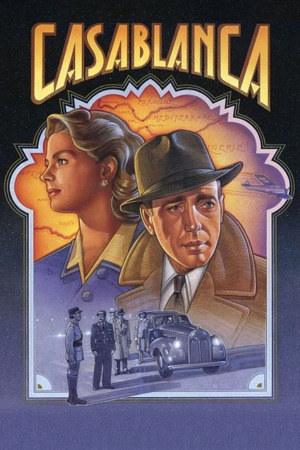
🇺🇸 | Jan 23, 1943
directed by Michael Curtiz
screenplay by Julius J. Epstein, Philip G. Epstein, Howard Koch
theatre play by Murray Burnett, Joan Alison
produced by Warner Bros. Pictures
starring Humphrey Bogart, Ingrid Bergman, Paul Henreid, Claude Rains, Conrad Veidt
1h42 | Drama, Romance
𐄂 not watched
Browse through collections
American Movies | director Michael Curtiz | writer Julius J. Epstein | writer Philip G. Epstein | writer Howard Koch | writer Murray Burnett | writer Joan Alison | studio Warner Bros. Pictures | actor Humphrey Bogart | actress Ingrid Bergman | actor Paul Henreid | actor Claude Rains | actor Conrad Veidt
Browse through genres
Drama | Romance
Links
trakt.tv | letterboxd
#American Movies#Michael Curtiz#Julius J. Epstein#Philip G. Epstein#Howard Koch#Murray Burnett#Joan Alison#Warner Bros. Pictures#Humphrey Bogart#Ingrid Bergman#Paul Henreid#Claude Rains#Conrad Veidt#Drama#Romance
0 notes
Text
Arsenic and Old Lace (Movie Review) | Fun & Captivating
When I went to see Arsenic and Old Lace I didn't expect to be as delightfully entertained as I was, there's a reason why it's a classic movie fan favorite. Check my review #ArsenicAndOldLace #ClassicComedy #FilmReview #CaryGrant #ClassicFilm #MustWatch
Frank Capra (Director)CASTCary GrantPriscilla LaneRaymond MasseyJosephine HullJean AdairJohn AlexanderPeter LorreBased on the play “Arsenic and Old Lace” by Joseph Kesselring Review This was my first Cary Grant movie. I kind of knew the name, I’d heard about him, even though I thought his first name was Gary. This 1944 movie is amazing, I went in blind, I knew the time of the showing – yes I…
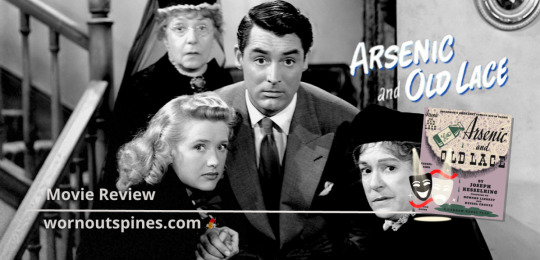
View On WordPress
#Based on a book#Based on a novel#Book adaptation#Book to Film#Book to Movie#Cary Grant#Charles Lane#Chester Clute#Comedy#Crime#Edward Everett Horton#Edward McNamara#Edward McWade#Frank Capra#Garcwrites#Garry Owen#Grant Mitchell#Jack Carson#James Gleason#Jean Adair#John Alexander#John Ridgley#Joseph Kesselring#Josephine Hull#Julius J. Epstein#movie adaptation#movie lovers#movie review#movies#Peter Lorre
0 notes
Text
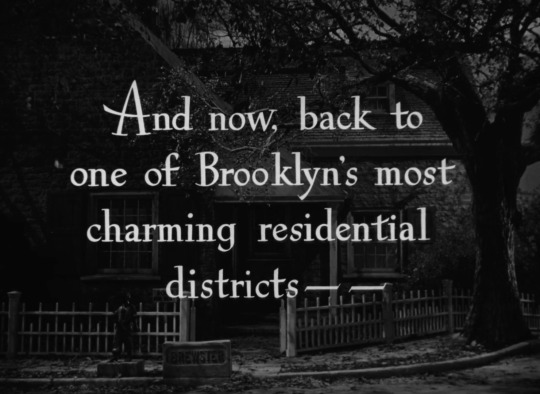

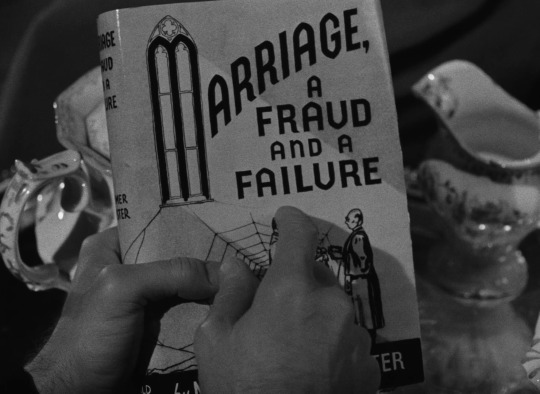
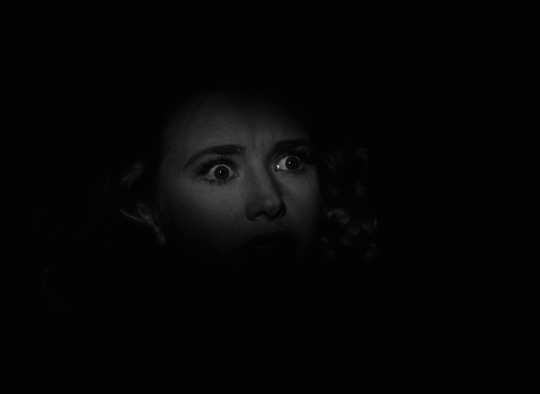
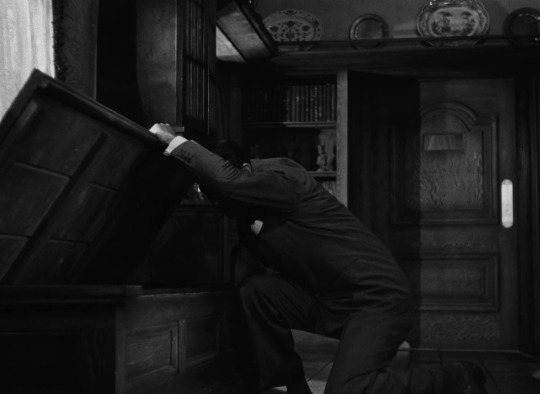
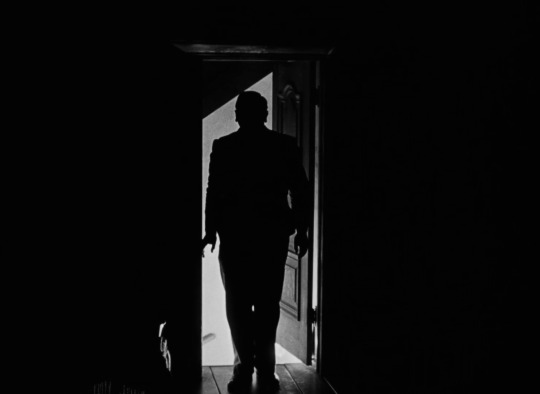
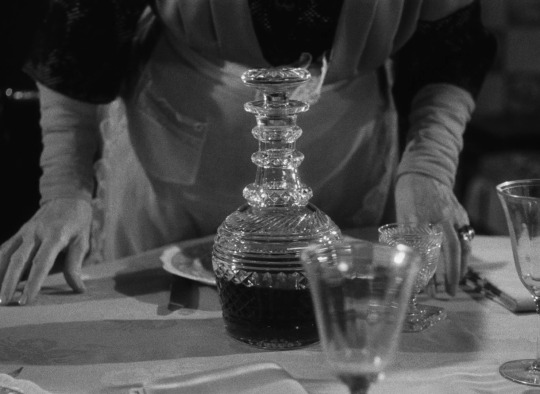

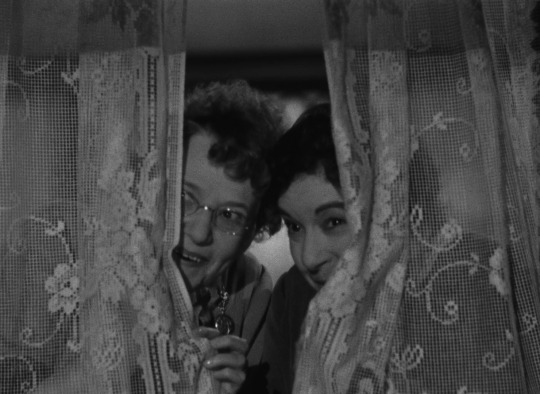
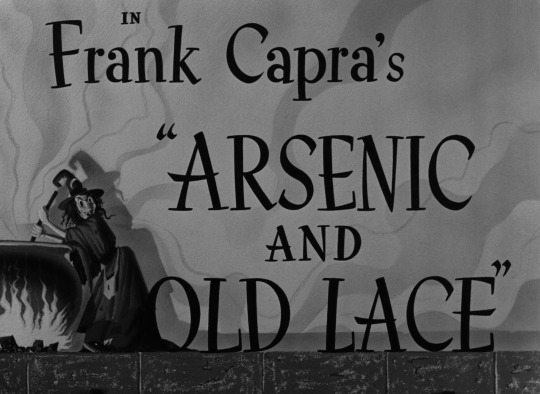
"When the curtain goes up the first thing you see is a dead body."
Arsenic and Old Lace, 1944.
Dir. Frank Capra | Writ. Julius J. and Philip G. Epstein, based on the play by Joseph Kesselring | DOP Sol Polito
151 notes
·
View notes
Text
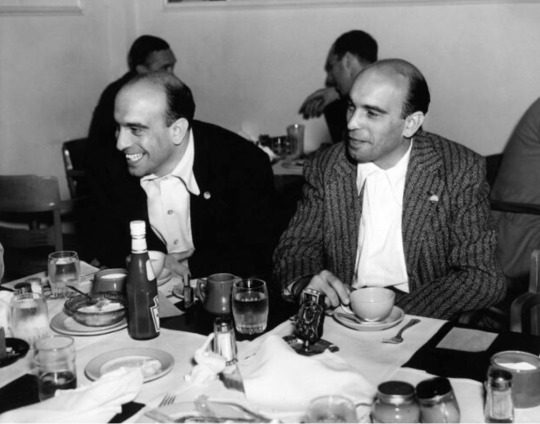
Screenwriter Julius J. Epstein (August 22, 1909 – December 30, 2000), pictured (right) with his brother Philip having lunch at Warner Bros. while working on the final script for THE STRAWBERRY BLONDE (1941).
8 notes
·
View notes
Text
Casablanca [Film] [ITA] Scena Finale
youtube
290,012 views Sep 18, 2010[SPOILER] Il miglior finale della storia del cinema. Amore Vs Patriottismo: Rick sceglierà quest'ultimo. Questa clip include sia il celeberrimo addio tra la Bergman e Bogart sia l' "inizio di una bella amicizia" tra Rick e il Cap. Renault. Casablanca è un film del 1942 diretto da Michael Curtiz. Interpreti e personaggi: Humphrey Bogart: Rick Blaine Ingrid Bergman: Ilsa Lund Laszlo Paul Henreid: Victor Laszlo Claude Rains: Capitano Louis Renault Conrad Veidt: Maggiore Heinrich Strasser Una delle pellicole hollywoodiane più celebri di tutti i tempi, è tratta dall'opera teatrale Everybody Comes to Rick's di Murray Burnett e Joan Alison. Premi Oscar (1944) Miglior film alla Warner Bros. Migliore regia a Michael Curtiz Migliore sceneggiatura non originale a Julius J. Epstein, Philip G. Epstein e Howard Koch Riferimenti:
0 notes
Text

Casablanca by Julius J. Epstein, Philip G. Epstein & Howard Koch
0 notes
Text

#ProyeccionDeVida
📣 Cine Club. And the Oscar goes to…
🎬 “CASABLANCA” 🌍💣
🔎 Género: Drama / Romance / II Guerra Mundial / África / Nazismo
⏰ Duración: 102 minutos
✍️ Guion: Julius J. Epstein, Philip G. Epstein, Howard Koch
📕 Obra: Murray Burnett y Joan Alison
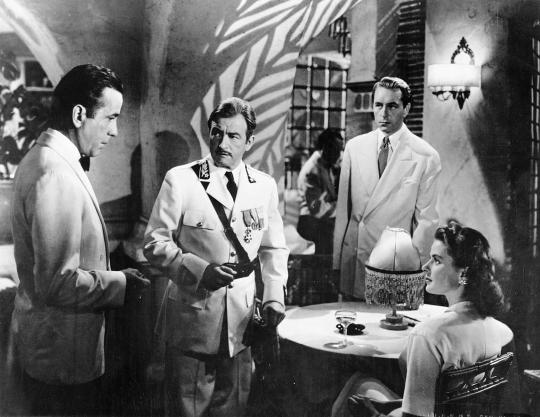
🎼 Música: Max Steiner
📷 Fotografía: Arthur Edeson (B&W)
🗯 Argumento: En los años cuarenta, a consecuencia de la Segunda Guerra Mundial, Casablanca era una ciudad a la que llegaban huyendo del nazismo gente de todas partes: llegar era fácil, pero salir era casi imposible, especialmente si el nombre del fugitivo figuraba en las listas de la Gestapo, que presionaba a la autoridades francesas al mando del corrupto inspector Renault. En este caso, el objetivo de la policía secreta alemana es el líder checo y héroe de la resistencia Victor Laszlo, cuya única esperanza es Rick Blaine, propietario del 'Rick’s Café' y antiguo amante de su mujer, Ilsa Lund. Rick e Ilsa se habían conocido en París, pero la entrada de las tropas alemanas en la capital francesa les separó..
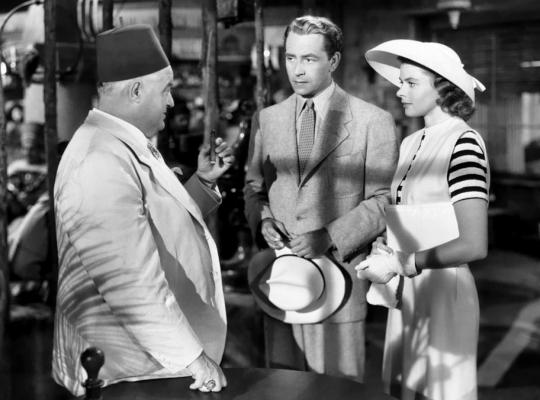
👥 Reparto: Humphrey Bogart, Ingrid Bergman, Paul Henreid, Claude Rains, Dooley Wilson y Conrad Veidt.
📢 Dirección: Michael Curtiz
© Productora: Warner Bros.
🌎 Pais: Estados Unidos
📅 Año: 1942
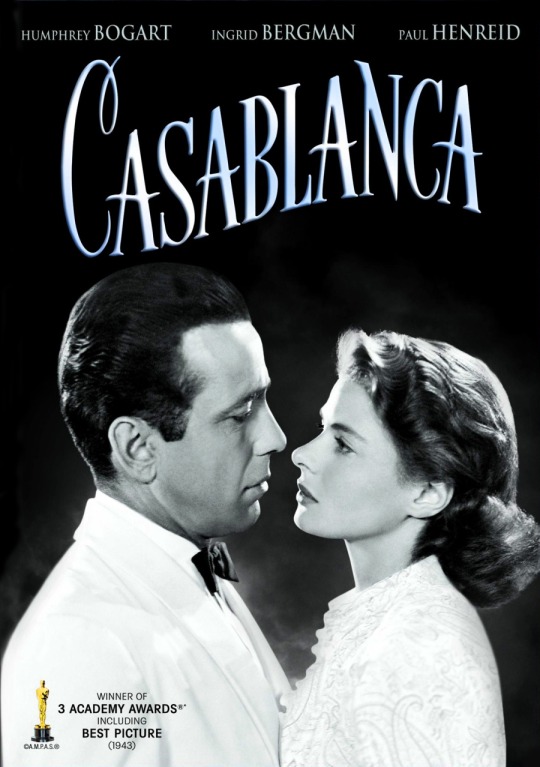
📽 Proyección:
📆 Jueves 15 de Febrero
🕖 7:00pm.
🏛 Auditorio del ICPNA (av. Angamos Oeste 160 – Miraflores)
🚶♀️🚶♂️ Ingreso libre
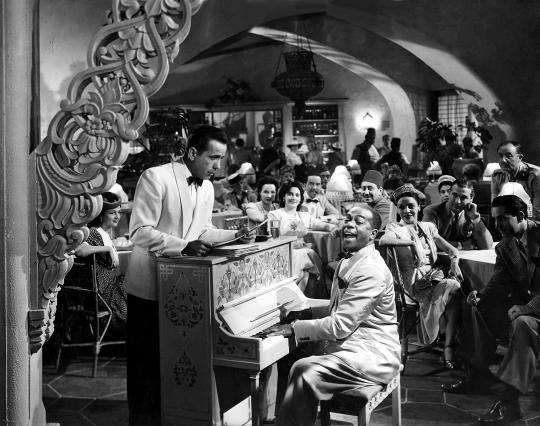
🖱 Inscripción: https://bit.ly/ciclo-de-cine
0 notes
Text
“Casablanca” During World War II and the Impact It Created Then and Now
Casablanca (1942) is regarded as one of the greatest films of all time. It has undeniably made history and secured itself one of the top spots in every movies-you-must-absolutely-watch list. Using contemporary themes accurate to the era it was being made in, weaving in dramatics and fiction that made it just a little bit easier to digest, but nonetheless, delivering a powerful story, Casablanca managed to capture the hearts of its World War II audience and transcend time with its relevance and sentiment, as good cinema does.
Funnily enough, despite being a film enthusiast, I have never watched Casablanca. Despite the noses that would definitely turn up at me for saying this, I can’t pretend that classic films have the same appeal to me as modern films do. My attention tends to sizzle out with the sing-song delivery, dialogue-heavy style of old movies. However, there are exceptions to this and I will have to say that Casablanca is one of them.
Casablanca follows the story of Rick Blaine, former freedom fighter turned nightclub and gambling hub owner in Casablanca, Morocco. Rick's Café Américain has become the number one spot in Casablanca for displaced refugees that seek safe passage to America through illegally obtained letters of transit. Despite his past, Rick now chooses to stay “neutral” and isolate himself from any political affairs, “I stick my neck out for nobody”. At least, that’s what it seems like on the surface. This existence is disrupted when his former lover and the cause of his cynicism, Ilsa Lund and her husband, Victor Laszlo, enter his saloon. The past quickly resurfaces and the flame within Rick and Ilsa is rekindled. He now has to face the choice of keeping his love by his side or doing the right thing for the greater good and losing the love of his life again. In the end, Rick cannot help but go back to his roots and do the right thing, “… three little people don’t amount to a hill of beans in this crazy world”. He ends up saving his rival, Victor Laszlo, and helping him and Ilsa safely flee Casablanca for him to continue his work as a leader of resistance in the war.
Casablanca was adapted from an unproduced play by Murray Burnett and Joan Alison then titled Everybody Comes to Rick’s. The idea for the play's premise came about when Murray Burnett traveled to Vienna to help out his Jewish relatives. While he was there, he learned that refugees used a route that traveled from Marseilles to Morocco to Lisbon to then bring them safely to the United States. Many refugees stopped over at Casablanca during the Nazi invasion of France in 1940.
Casablanca, the film, came about when Irene Diamond, story editor for Warner Brothers, read the unproduced play while on a visit to New York City in 1941. Diamond, being a long-time collaborator of Hal Wallis, convinced him to buy the play’s rights for $20,000. The name was then changed from Everybody Comes to Rick’s to the iconic title, Casablanca.
The film started production in May 1942, during the height of World War II with A-list actors already in its roster: Humphrey Bogart, Ingrid Bergman, and Paul Henreid. Production for the movie had to be rushed when Stephen Karnot saw an opportunity that they could take advantage of when Japanese forces attacked Pearl Harbor. He saw this as a massive publicity boost and made the film’s themes extremely relevant at the time. Due to this and a couple of other hiccups, filming did not go too smoothly.
Julius J. Epstein, Philip G. Epstein, and Howard Koch were enlisted to write the screenplay. The script was only half-written when production began. Nobody knew how the film would end. Bergman came to Howard Koch to ask which man she should play like she’s more in love with, Victor or Rick. The scriptwriter couldn’t answer this specifically and instead just told her to play them both “evenly” as they also had no idea what was going to happen. The script went through many more rewrites during filming.
Production also suffered with shortages and limitations at the time of filming. Because of the ongoing war, production could not use materials such as rubber, aluminum, nylons, and silk because of the shortages. Costumes and sets had to be made differently. Filming also could not be done on location or at nighttime because of the looming threat of a Japanese attack in mainland California. Casablanca had to be filmed entirely on soundstages.
Casting was also affected by the war. Almost all of the cast of Casablanca were actual refugees, which, in part, may have contributed further to its success. Emotions ran high while the cast sang, “La Marseillaise” in the now iconic scene. Both on- and off-screen, this symbolized for them unity against the fascism and oppression that was happening at the time. The passion can be heard in their voices as they drown out the “Die Wacht am Rhein” of the Germans. Real tears are shed by real refugees who were displaced in the war.
Censorship also played a bit of a hindrance in the making of Casablanca. The film was dealing with a lot of sensitive topics at the time: adultery, war, and propaganda. It had to go through a lot of rewrites and plot changes for the film to be considered “appropriate” for the audience. Censors had to make sure that the film did not condone adultery and that it would send the right message when it came to supporting the war effort.
From an insider’s point-of-view, the film seemed lackluster and a bit of a patchwork with its unfinished script, production limitations, numerous rewrites, censorship, and actors that barely wanted anything to do with the project. However, the way it all came together was magical and exceeded the expectations of everyone who was a part of making the movie.
Much like how production was rushed for this film, the premiere was also moved from 1943 to November 1942. Additional scenes were supposed to be filmed but canceled to be able to hasten its release. This was to take advantage of another major moment in the war: the Allied landing in North Africa and the Battle of Casablanca. This was huge publicity and helped not only to draw the crowds for the film but to also increase its resonance with the people. The film continues to grow in popularity and has achieved “classic” status in today’s time.
I believe its success comes from the raw romanticism of sacrifice that this film portrays. Boy does not get girl. Instead, sacrifices needed to be made for the greater good. It’s a satisfying ending that had us all wanting to do the right thing. This film is about love but it’s not just about romantic love. It’s about the love that we have for people, in general. The good that we see in the world even in times of darkness.
1 note
·
View note
Text
Casablanca: um olhar profundo sobre o filme
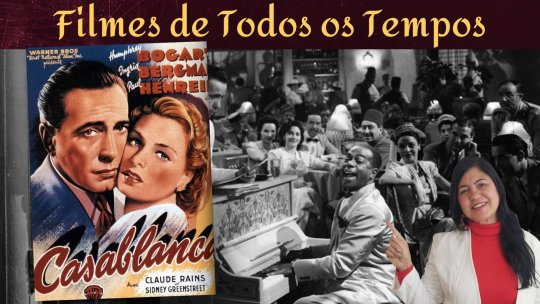
Imagine se você estivesse vivendo em um período de guerra mundial. Se tivesse que escolher entre salvar sua vida e a vida de alguém que você ama muito, o que você faria? Este é o drama vivido pelo personagem Rick, do filme Casablanca! Sejam bem vindos à série Filmes de Todos os Tempos do canal Alfarrábios da Alma. Aqui eu conto um pouco sobre o filme, para você que ainda não assistiu, sem spoiler. E depois, teço alguns comentários mais profundos sobre o filme, do ponto de vista do autoconhecimento, do desenvolvimento pessoal e da espiritualidade, com um pouco de spoiler. Então, vamos pra telinha!
Resumo do Filme
O filme Casablanca é um dos mais importantes e conhecidos filmes de Hollywood (Hollywood – Wikipédia, a Enciclopédia Livre, 2023), lançado durante a Segunda Guerra, em 1942 e tratando do tema da guerra. No drama envolvente, Rick se vê dividido entre seu amor por Ilsa Lund (Ingrid Bergman) e seu senso de dever para com a causa aliada. O filme foi dirigido pelo austro-húngaro Michael Curtiz (Michael Curtiz – Wikipédia, a Enciclopédia Livre, 2023), que fez vários outros filmes importantes nos idos de 1940, tais como As aventuras de Robin Hood, Elvis Presley e Balada Sangrenta, além de diversos filmes de um ator muito famoso na época, chamado Errol Flynn (Casablanca (Filme) – Wikipédia, a Enciclopédia Livre, 2023). A história do filme foi uma adaptação da peça de teatro “Everybody Comes to Rick's” (Everybody Comes to Rick's, 2019), que em português seria “Todo mundo vem para o Rick”, uma peça não produzida, portanto só um esboço escrito por Murray Bennett e Joan Alison. Os autores, ilustres desconhecidos na época, viveram uma história verídica algo semelhante à história do filme e se baseiam nessa história para escrever a peça. Estrelado por Humphrey Bogart e Ingrid Bergman, o filme conta a história de Rick Blaine, papel de Humphrey Bogart, proprietário do café do Rick, em Casablanca, uma cidade do Marrocos, na costa atlântica do norte da África (Casablanca – Wikipédia, a Enciclopédia Livre, 2023), que estava sob o domínio da França de Vichy e, consequentemente da Alemanha, durante a Segunda Guerra Mundial. Rick se vê dividido entre seu amor pela ex-namorada Ilsa Lund (Ingrid Bergman) e seu senso de dever para com a causa aliada. Rick tem como amigo e como pianista de seu bar o saudoso Sam, interpretado por Dooley Wilson (Dooley Wilson – Wikipédia, a Enciclopédia Livre, 2023), que toca a música imortalizada pelo filme “As Time Goes By”. Na peça original, baseada em alguns fatos vividos pelos escritores, eles encontraram de fato, na França, um pianista negro tocava jazz para uma multidão de franceses, nazistas e refugiados. Uma informação interessante é que o piano em que Sam toca "As Time Goes By" no filme foi leiloado, em novembro de 2014, por 2,9 milhões de dólares em Nova Iorque (As Time Goes By – Wikipédia, a Enciclopédia Livre, 2023). O filme foi produzido em 4 meses, de maio a agosto de 1942, e teve um custo de US$1.039.000 (Um milhão e trinta e nove mil dólares), tendo sido lançado em novembro do mesmo ano. O filme foi indicado a 8 oscars, tendo recebido de fato 3 oscars: - o de melhor filme, pela Warner Bros. tendo Hal B. Wallis como produtor; - o de melhor direção, por Michael Curtiz - o de melhor roteiro adaptado, por Julius J. Epstein, Philip G. Epstein e Howard Koch O filme também é considerado um clássico do cinema noir e um dos melhores filmes de amor já produzidos.
Um Olhar Profundo (Início do Spoiler)
Rick é um americano que vive em Casablanca desde que foi forçado a fugir dos Estados Unidos por causa de suas atividades antifascistas. Ele é dono do Rick's Café Américain, que é uma casa noturna frequentada por todo tipo de pessoa, incluindo refugiados e nazistas. A característica principal do bar de Rick é justamente a liberdade e a diversidade de pessoas que ali frequentam, desde que não provoquem brigas, nem confusões, as quais o Ricky reprime sem pena. Um dia, Rick recebe a visita de Ilsa Lund, uma mulher por quem ele foi apaixonado no passado, quando vivia em Paris. Ilsa é casada com Victor Laszlo (Paul Henreid), que é um líder da resistência tcheca que está sendo perseguido pelos nazistas. O casal precisa escapar de Casablanca e ir para o Estados Unidos, onde Lazlo poderá continuar sua luta contra o regime nazista. Existem 2 salvos-condutos que desapareceram, que são um misto de passaporte com visto de entrada num país, com validade determinada, mas ninguém sabe com quem estão. Estes documentos poderiam ser a chance de Lazlo e Ilsa saírem de Casablanca para os Estados Unidos. Será que os salvos-condutos estão nas mãos do Ricky? Estando ou não, Rick está relutante em ajudar Ilsa, pois ainda está magoado por ela o deixar esperando em uma estação de trem em Paris. Mas ele não sabe o porquê de Ilsa ter agido dessa forma (00:46). Ilsa procura por Ricky e pede ajuda para sair do país e ele concorda em ajudar. Ilsa imagina que ele tem os salvos-condutos e que eles irão fugir juntos, inclusive porque o próprio marido Lazlo aprova que ela vá embora sem ele. Mas Ilsa não concorda com isso. Ilsa acaba explicando a Rick que ela já era casada com Lazlo na época de Paris em que tiveram um caso. No entanto, não pode contar isso a Ricky, porque o próprio Lazlo não queria que ninguém soubesse que eles eram casados, para garantir a segurança dela. (01:21:00) Além disso, nessa mesma época, o marido havia sido capturado e jogado em um campo de concentração, de modo que Ilsa acreditava que o marido estivesse morto. Qual não foi sua surpresa quando o marido retornou vivo, logo depois de ela ter o caso com Ricky. Após as justificativas de Ilsa, Rick decide ajudá-la e prepara um plano de fuga, usando os dois salvos-condutos. Ilsa imagina que os documentos serão para ela e para o Ricky, porém Ilsa e Lazlo acompanham Rick ao aeroporto, junto com o chefe de polícia, estando este sob a mira de um revólver apontado por Rick. Nesse momento, Rick precisa fazer uma escolha: renunciar ao seu amor por Ilsa e ajudá-la a escapar com seu marido, ou escapar com ela de Casablanca, deixando Lazlo para trás. No final, Rick decide ajudar Ilsa e Laszlo a escaparem. Ilsa fica inconformada, mas Rick explica que ela tem um importante papel na vida de Lazlo e que Lazlo tem um papel importante como revolucionario contra o regime nazista, de modo que eles devem continuar sua missão nos Estados Unidos. Ou seja, Rick abdica de seu amor e coloca sua vida pessoal em segundo plano, em prol do bem comum, da luta por um ideal de justiça e humanidade. Em termos de autoconhecimento e espiritualidade, o filme ensina sobre o amor, o sacrifício e o senso de dever. A pessoa que ama e é abandonada, em primeiro lugar, ela tem a sensação de que não foi amada. No caso do Rick, ele e Ilsa combinaram de fugir juntos de Paris, para viverem juntos em uma outra realidade. Mas Ilsa deixa ele esperando na estação de trem com Sam e isso faz com que ele fique com ódio dela. E que tipo de amor é esse que se transforma em ódio? Esse é o amor condicional, é o amor egoísta. Porque a pessoa que tem amor no coração, ela vai compreender o outro e continuar amando. Mas com o passar do filme, nós percebemos que aquele ódio que Rick sente pela Ilsa é algo superficial. Mas que nas profundezas do seu coração, ele continua sentindo amor. E em que momento temos certeza de que aquele amor que o Rick começou a sentir em Paris continua sendo o mesmo amor e que é verdadeiro? No momento em que ele salva a Ilza e o marido Lazlo, dando a eles os salvos-condutos. Além disso, ele também mostra a sua nobreza de espírito, salvando o Lazlo, que é alguém que se dedica quase integralmente às causas aliadas, que seria o bem comum. Ou seja, ele abdicou de sua amada e abdicou de sua própria segurança, ficando em Casablanca, em prol de manter a vida de uma pessoa que luta pelo bem comum, que é Lazlo, e em prol da sua parceira, que é o combustível de Lazlo para continuar lutando pela causa. Se ele fosse um egoísta, ele certamente não teria a nobreza de dar o salvo-conduto ao Lazlo, marido da sua amada e teria ele mesmo ido com ela, deixando Lazlo em Casablanca sozinho, só esperando a morte. Se você se lembrar de uma conversa entre o marechal alemão e a Ilsa, o marechal disse para ela que Lazlo só tinha duas alternativas: a primeira opção era um salvo-conduto que o marechal daria ao Lazlo para que retornasse à França de Vichy, ou seja, uma opção péssima, porque a França de Vichy estava sob o domínio da Alemanha. E a segunda opção era a morte dele em Casablanca. (procurar trecho no filme) Veja que situação difícil: coloque-se no lugar do Rick. Se você estivesse em meio a uma guerra mundial e tivesse se apaixonado por uma pessoa casada. Se essa pessoa vem até você pedir sua ajuda para manter a vida do seu parceiro ou parceira, o que você faria? Você ajudaria essa pessoa que você ama? Você se aproveitaria da situação para eliminar o parceiro ou parceira dessa pessoa que você ama, para poder ficar com ela? Você não ajudaria simplesmente? Deixaria a pessoa sem ajuda, mesmo você tendo as condições para ajudar? Vamos complicar um pouco mais a situação? Vamos supor que esse parceiro ou parceira da pessoa que você ama fosse alguém importante para muitas pessoas? Fosse alguém crucial para ajudar a resolver um problema grande, relativo a uma cidade ou país? Vamos supor que essa pessoa fosse um revolucionário, capaz de mudar o mundo? Uma pessoa que, de alguma forma, tivesse o poder de uma mudança substancial para o bem, que fosse em uma pequena parte do mundo? E vamos supor que você não tem esse poder. Você permitiria que essa pessoa fosse salva no seu lugar, como fez o Rick? Aí é que está a diferença entre o egoísta e o virtuoso. O egoísta vai salvar a si mesmo e, talvez, a pessoa por quem ele é apaixonado. O virtuoso vai pesar a situação e tentar alguma solução em que ele possa se salvar, porque nenhuma vida é dispensável, muito menos a sua, e possa salvar também aquela pessoa que pode salvar o mundo. E não simplesmente deixar que essa pessoa morra, por ser alguém que ganhou uma competição de amor, ficando com a mulher que ele ama. Foi isso que o Rick fez: salvou alguém com quem ele competiu e perdeu, de certa forma. Mas ele fez isso porque sabia de suas próprias capacidades. Se você se lembrar, o Rick já era uma pessoa que vivia bem, ali em Casablanca. Ele também já era capaz de viver sem a sua amada Ilsa, porque já tinha aprendido a lidar com isso, com a solidão, com a tristeza. E ele conseguiu sobreviver e lutar pela sua própria vida em Casablanca, chegando a ser o dono de um bar que recebia todo tipo de pessoa, de qualquer nacionalidade, de qualquer corrente política. O Rick é uma pessoa admirável, no sentido de que aprendeu a lidar com as situações mais adversas, mesmo tendo se tornado um pouco rígido e duro, no fundo, ele é um sentimental, ele ajuda as pessoas que precisam. Mesmo que inicialmente ele demonstre um certo desprezo pela generosidade e até chegue a ser rude com as pessoas que pedem ajuda, ele sempre acaba ajudando a pessoa. Vejam o exemplo da moça que nem mesmo pediu ajuda a ele, apenas fez uma pergunta sobre o Capitão Renault (1:06:08). Mesmo assim, o Rick deu uma ajudinha para o marido da moça ganhar na roleta para ter o dinheiro dos vistos para a América. O Rick deixa claro em várias situações que ele é um egoísta durão. Mas nas suas atitudes, ele também mostra que tem um coração. Ou seja, ele é durão o bastante para se manter em Casablanca, um lugar cheio de surpresas e conflitos, onde passam estrangeiros de todo mundo, já que a cidade é o maior porto da África, e, na época, era considerado um centro de luta de poder entre potências inimigas europeias, que são França e Alemanha. Embora Casablanca estivesse sob o domínio francês, já que Marrocos só se tornou independente em 1956, temos que nos lembrar que, em 1942, em plena Segunda Guerra, parte da França estava sob o domínio da Alemanha. Rick sabe que é um pouco egoísta e por isso não se colocaria no lugar do Sr. Lazlo, que deu a vida pela revolução. Ele sabia que Lazlo era a pessoa capaz de fazer o sacrifício necessário por uma grande causa. E também sabia que o que dava força para que o Lazlo fizesse tal sacrifício, era justamente o amor que ele sentia pela Ilsa. Assim, Rick também sabia que, se ele tirasse a Ilsa de Lazlo, ele não teria mais a mesma força para continuar suas batalhas. A história de Rick, Ilsa e Lazlo lembra um pouco a história do Rei Arthur, Guinevere e Lancelot. O Rei Arthur seria equivalente a Lazlo. Guinevere seria Ilsa e Rick seria Lancelot. A história conta que o Rei Arthur, em seu papel de rei e, portanto, regente do povo, era casado com a Guinevere, que também era muito respeitosa com Arthur, assim como Ilsa, porém não era propriamente apaixonada por ele. Então, Guinevere conhece Lancelot em uma viagem em que este vai escoltá-la para se casar com Arthur. Assim, os dois se apaixonam, da mesma forma que Rick e Ilsa se apaixonam em Paris. Eles acabam tendo um caso e Ilsa trai o marido, assim como Guinevere traiu Arthur com Lancelot. A diferença é que o final da história de Rick é mais feliz que o destino de Lancelot, que acaba sendo enfeitiçado por Elaine, a prima de Guinevere, que se passa por Guinevere e tem um filho com ele. Por causa disso, Lancelot é expulso do reino pela Guinevere e enlouquece, enquanto Rick, ao contrário, fica bem consigo mesmo em Casablanca. Assim, fica claro que Rick já desenvolveu seu espírito um pouco além do seu ego, sendo uma pessoa capaz de enfrentar a solidão, na forma de solitude; sendo capaz de abdicar do seu amor, na forma de compaixão; sendo capaz de viver com alegria e generosidade em seu bar tão amigo da diversidade! Bem, espero que essas reflexões te ajudem a ter um olhar profundo sobre o filme Casablanca! Se você já assistiu, que tal assistir de novo com essa nova perspectiva? Se não assistiu ainda, pegue a sua pipoca, e bota pra estourar! Read the full article
#amoraltruísta#amoregoísta#AmorVerdadeiro#AsTimeGoesBy#bemcomum#Casablanca#casablancafilme#casablancamarrocos#casablancamúsica#CausaAliada#DooleyWilson#Drama#ErrolFlynn#EverybodyComestoRick's#Filme#FrançadeVichy#Guinevere#Hollywood#HumphreyBogart#IngridBergman#JoanAlison#Lancelot#MelhorDiretor#MelhorFilme#MelhorRoteiro#MichaelCurtiz#MurrayBennett#nobrezadecaráter#nobrezadeespírito#Oscar
0 notes
Text

Book by...
Julius J. Epstein and Philip G. Epstein (Saturday Night), Arthur Laurents (West Side Story, Gypsy, Do I Hear a Waltz?, Anyone Can Whistle), Larry Gelbart (Forum), Burt Shevelove (Forum, The Frogs), George Furth (Company, Merrily We Roll Along), James Goldman (Follies, Evening Primrose), Hugh Wheeler (Candide, A Little Night Music, Sweeney Todd), John Weidman (Pacific Overtures, Assassins, Road Show), James Lapine (Sunday in the Park with George, Into the Woods, Passion), Nathan Lane (The Frogs), David Ives (Here We Are).
0 notes
Text
... Joy Page as Annina Brandel (American actress, the Jack Warner's stepdaughter); directed by Michael Curtiz, screenplay by Julius J. Epstein, ...
Joy Page (born Joy Cerrette Paige; November 9, 1924 – April 18, 2008) was an American actress. She is best known for her role as the Bulgarian refugee Annina Brandel in Casablanca (1942). She was sometimes credited as Joanne Page.
Boss, you've done a beautiful thing...
youtube
661,518 views Aug 12, 2010
No description has been added to this video.
Transcript
0:00how's Lady Luck treating you Oh too bad
0:04to finally move there
0:13mr. Rick
0:14yes could I speak to you for just a
0:16matter please you get in here you're
0:17underage I came of Captain Renault I
0:19should have known my husband is with me
0:22too
0:22yes what captain rhinos getting
0:24broad-minded sit down we have a drink
0:26of course not do you mind if I do asou
0:30Rick
0:31what kind of a man is Captain Renault oh
0:33you're just like any other man only more
0:35so
0:35I mean is he trustworthy is his word oh
0:38just a minute who told you to ask me
0:40that he did captain Renault I thought so
0:43where's your husband
0:45at the roulette table trying to win
0:47enough for our exit visas well of course
0:50he's losing how long have you been
0:52married eight weeks we come from
0:56Bulgaria well things are very bad that
0:59Monsieur the devil has the people by the
1:01throat so Jana and I are we we do not
1:06want our children to grow up in such a
1:07country so you decided to go to America
1:09yes but we have not much money and
1:13traveling is so expensive and difficult
1:15it was much more than we thought to get
1:18here and then kept her in old Caesars
1:20and he is so kind he wants to help us
1:23I shall bet he tells me and give us an
1:26exit visa but but we have no money does
1:30he know that oh yes and he's still
1:32willing to give you a visa yes Monsieur
1:33and you want to know will he keep his
1:36word he always has
1:42Monsieur you are a man if someone loved
1:47you very much
1:49so that your happiness was the only
1:50thing that she wanted in the world she
1:54did a bad thing to make certain of it
1:57could you forgive her nobody ever loved
1:59me that much and he never knew and the
2:02girl kept his bad thing locked in her
2:04heart that would be all right wouldn't
2:06it you want my advice
2:08oh yes please go back to Bulgaria oh but
2:11if you knew what it means to us to leave
2:12Europe to get to America oh but if Yan
2:17should find out he is such a boy
2:20in many ways I am so much older than he
2:23is
2:23yes well everybody in Casablanca has
2:26problems yours may work out you excuse
2:28me agents mop Collegium it until Easter
2:33laser sulfate la party continue Madame
2:36de Monsieur Marco leisure leisure saw
2:38San Marco leisure leisure sulfur blonde
2:47Rita do you wish to place another bit no
2:52no I guess not
2:54and they tried 22 tonight I said 22
2:59Blackpool is early times in its
3:01journalist author left equal to you
3:04Marconi show fini Berta
3:08dude what to do
3:14leave it there
3:19nopony showed me dumb service you lose
3:21your sort fair Martha little about the
3:25continued Maskull he journeys your sort
3:27fact yet never be hard to dude what Baby
3:31Bop yes you can you don't come back
3:33again fabulous good believe are you sure
3:37this place is honest honest as an
3:40Assessor days long
3:43yeah know that blue are we doing tonight
3:46well cup of thousands less than I
3:48thought they would be your knob up Lee
3:52Kapoor Farabaugh Surrey Markkula Jamie
3:59does it is delicious just a lucky guy
4:05may I get you a cup of coffee
4:07no thanks Karl yes Yuri yeah never blue
4:11yarn about printed on jump up me mother
4:13after we go Mia oh not here please come
4:17to my office in the morning we'll do
4:18everything business I will be there at
4:206:00 I'll be there at ten I'm very happy
4:23for both of you still it's very strange
4:25that you won
4:26well maybe not so strange I'll see you
4:29in the morning thank you so much captain
4:31radio mmm
4:36Olivia Twitter's me check what you've
4:40done a beautiful thing where you create
4:44a Russian language
4:53you
1 note
·
View note
Photo
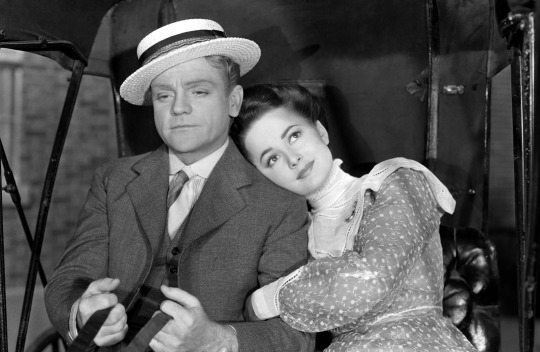
The Strawberry Blonde (1941)
During the height of the Old Hollywood Studio System – when studios themselves contracted directors, actors, writers, and other craftspersons – Warner Bros. found its niche as the “dark” studio. Warners might not have invented the gangster picture, but they codified its archetypes and tropes, becoming synonymous with the subgenre. In the early 1940s, director Raoul Walsh (a film noir pioneer; 1940’s They Drive by Night and 1941’s High Sierra) was nearing the peak of his career and actor James Cagney (1938’s Angels with Dirty Faces, 1949’s White Heat) was perhaps Warners’ most bankable star. Walsh was known for his proto-noir works and crime dramas; Cagney arguably the era’s definitive gangster actor. By 1941, both needed something different to work with.
Adapted by brothers Julius J. and Philip G. Epstein from James Hagan’s pastoral stage play One Sunday Afternoon, The Strawberry Blonde was exactly what both men sought. The Strawberry Blonde – often billed as a romantic comedy because it is a much lighter adaptation than 1933’s One Sunday Afternoon (starring Gary Cooper and Fay Wray) – is a celebration of simple, unadorned love. Though not a gag-a-minute comedy, Walsh’s uncharacteristic film shines through the performances from Cagney and especially Olivia de Havilland (three years removed from The Adventures of Robin Hood and two from Gone with the Wind). It is a joyous and nostalgic production; perhaps it should be no wonder it was a career favorite film for Walsh and a highlight for Cagney.
The Strawberry Blonde occupies two time periods. The film is set in New York City sometime in the late nineteen aughts or early 1910s, but primarily told through flashback during the late 1890s. In the flashback, Biff Grimes (James Cagney) aspires to become a dentist and yearns for a strawberry blonde socialite named Virginia Brush (Rita Hayworth; whose singing voice is, in a fleeting scene, not dubbed for the only time in her career). Along with his buddy and soon-to-be business partner, Hugo Barnstead (Jack Carson), they go on a messy double date with Virginia and her friend, the nurse and suffragist-leaning Amy Lind (Olivia de Havilland). Upon first impressions, Biff considers Amy to be the less attractive, amusing, and sociable girl. When fate – or, more precisely, Hugo’s duplicity – intervenes, Biff and Amy find love together and marry. While Biff begins studying for a dentistry diploma by mail correspondence, the two navigate financial and personal travails. Despite the marriage, Biff harbors a stewing resentment towards Hugo and a lingering covetousness towards Virginia apparent in the film’s bookends.
Among the bit players are Alan Hale as Biff’s father; George Tobias as Biff’s and Amy’s Greek immigrant friend, Nicholas Pappalas; Una O’Connor as Mrs. Mulcahey; and George Reeves (a future television Superman) as a belligerent, loudmouth, mustachioed college man who – due to his sweater – I choose to believe is from Yale. The four actors listed here, all Warner Bros. contractees at the time, each have their memorable moments.
The Strawberry Blonde serves as a memorialization to the time of Walsh and Cagney’s upbringing, similar to Vincente Minnelli’s Meet Me in St. Louis (1944) at Metro-Goldwyn-Mayer (MGM) and, if one wants to draw a modern throughline, the Duffer Brothers’ Stranger Things. In many ways, the film also feels like a musical. There are numerous diegetic performances of songs – whether by our central cast or a band – popular during the turn of the century. “The Band Played On” (from which the film derives its title; “Casey would waltz with a strawberry blonde / and the band played on”), “Bill Bailey”, “The Fountain in the Park”, “Meet Me in St. Louis”, “Wait ‘Till the Sun Shines, Nellie”, and much more fill the soundtrack. Composer Heinz Roemheld’s (1942’s Yankee Doodle Dandy, 1947’s The Lady from Shanghai) work adapts many of these songs into a boisterous, energetic score. Roemheld knows when to dial his orchestra back during the film’s most intimate scenes, but this wall-to-wall score evokes the period. Ostensibly, according to the screenplay, it was a time of romantic walks and live music performances in almost all social settings. In a sense, these decisions make The Strawberry Blonde into a sort of half-musical.
With his most recent movie being the film noir High Sierra (1941) with Ida Lupino and Humphrey Bogart, the transition from a largely outdoors-set crime drama to interior-heavy romantic comedy nevertheless suited Walsh. Walsh receives immeasurable help from one of the best cinematographers ever in James Wong Howe (1941’s Abe Lincoln in Illinois, 1963’s Hud). Howe’s signature high-contrast, low key lighting – generally associated with film noir – is not present much in The Strawberry Blonde. But what Walsh and Howe accomplish is making a bygone decade contemporary again. Outside the film’s romantic scenes including Cagney and de Havilland or Cagney and Hayworth, the film’s frames overflow with activity. With masterful use of blocking and mise en scène in these moments, Walsh and Howe’s frames are always dynamic, moving – but not swooping – alongside masses of extras and supporting characters rather than staying put, as if taking still photography. A static camera during Biff’s dates out on town would immediately render The Strawberry Blonde as a dusty artifact, a creaky throwback. Stationary cinematography has its uses when there are plenty of actors on-screen, but such a decision would make this remake too much like its 1930s original. Instead, in conjunction with Orry-Kelly’s (1951’s An American in Paris, 1959’s Some Like It Hot) outstanding costume design, the past leaps out of the history books and memories to be present again.
youtube
The notable instances in which Walsh and Howe keep their camera as rigid as possible are when Biff finds himself at the park bench where he and Amy first met. The set for the park also happens to be art director Robert M. Haas’ (1941’s The Maltese Falcon, 1949’s The Inspector General) plainest craftsmanship in the entire film. These scenes are the most obviously soundstage-bound moments – the too-perfect grass, the flatness, and lack of discernible lighting – despite the extras strolling in the deep background. The Strawberry Blonde’s park scenes mark the beginning and the renewal of Biff and Amy’s relationship, rendering them arguably the romantic highlights of the film. The contrast from these scenes to places such as the beer garden, the Central Park Zoo, or the Statue of Liberty make them the least “present” of the film. Some viewers less experienced in Old Hollywood (or those who, wrongfully, dismiss the style altogether) might complain about the obvious artifice in those park bench scenes with Biff and Amy, but my goodness does the aesthetic contrast make one take notice. Not only that, but the Epstein brothers’ dialogue for Cagney and de Havilland here is gently funny, and filled with warmth.
James Cagney, with his vaudeville background, was known for his physically exaggerated performances that nevertheless maintained a raw emotional core. That works to his benefit throughout The Strawberry Blonde, in which the character of Biff often sounds calm and measured, but his words bely fearfulness and bitterness. Despite the tough-guy gangster persona he often played in Warners’ gangster pictures, there are shades of Cagney’s later performance as George M. Cohan in Yankee Doodle Dandy here. Look at the grace in his dancing at the beer garden, a seemingly spontaneous cartwheel upon learning wonderful news, and how he putters about restlessly when conversing with Amy for the first time while expecting Virginia to show up. But also notice his weariness during the film’s bookends, how he accepts – but does not despair about – his station in life.
Olivia de Havilland is Cagney’s equal in this film, and a great foil to Rita Hayworth (whose character of Virginia is depicted as more conventionally attractive, but possesses a casual cruelty and vanity that gradually reveals itself). A middle-class nurse is an unusual role for an actress known at the time for mostly playing rich women and/or Errol Flynn’s love interest in swashbucklers or Westerns. As Amy, de Havilland curiously receives two “introductory” scenes in the film – both radically different from the other in storytelling function, reflecting the rarity of a second first impression and Biff’s tendency to see only surface details. Seemingly reserved but playful when she wishes to be, de Havilland’s Amy is an absolute delight of a character from the moment she appears. One crucial moment late in the film – in which Biff is dancing around an implied truth so that he can soften the blow for Amy – is heartbreaking acting from both. De Havilland’s movement and her glance outside the window in that scene epitomizes the agony in that moment. Knowing both actors’ resumes, I initially came into The Strawberry Blonde thinking that, on paper, Cagney and de Havilland would be a romantic mismatch. What a happy surprise it is to be completely wrong.
Unlike contemporary films that might take a nostalgic trip to a decade like the 1970s, ‘80s, or ‘90s, The Strawberry Blonde feels, at times, truly transporting. The incredible attention to visual details and especially the diegetic music (too often those newer nostalgia-driven movies resort to pin drops of non-diegetic music) help immensely. Though the film suggests an immigrant experience that would have been appropriate for turn-of-the-century New York, The Strawberry Blonde declines to say more about it – most likely a result of the original source material (“pickaninny”, a derogatory term that refers to black or dark-skinned children, is casually used in a song’s lyric).
At the center of this rich period detail lies an honest love between two people flowing through life’s currents. Sometimes their love is troubled with melodramatics, but they find ways to comfort and help the other with humor and goodness. Sure, it can be sentimental stuff. But it endures an upsettingly difficult test. The Strawberry Blonde has no designs to being other than a sincere love story and a fond lookback of another time. As such, it triumphs – with just one more chorus of “The Band Played On”, if you please.
My rating: 7.5/10
^ Based on my personal imdb rating. My interpretation of that ratings system can be found in the “Ratings system” page on my blog (as of July 1, 2020, tumblr is not permitting certain posts with links to appear on tag pages, so I cannot provide the URL). Half-points are always rounded down.
For more of my reviews tagged “My Movie Odyssey”, check out the tag of the same name on my blog.
#The Strawberry Blonde#Raoul Walsh#James Cagney#Olivia de Havilland#Rita Hayworth#Jack Carson#George Tobias#Una O'Connor#George Reeves#Lucile Fairbanks#Julius J. Epstein#Philip G. Epstein#James Wong Howe#Heinz Roemheld#Hal B. Wallis#Orry Kelly#WB100#TCM#My Movie Odyssey
13 notes
·
View notes
Text


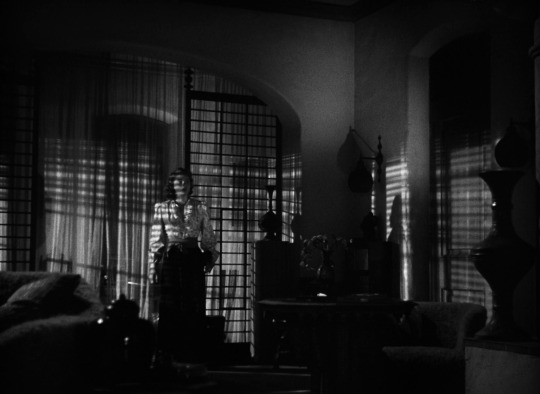
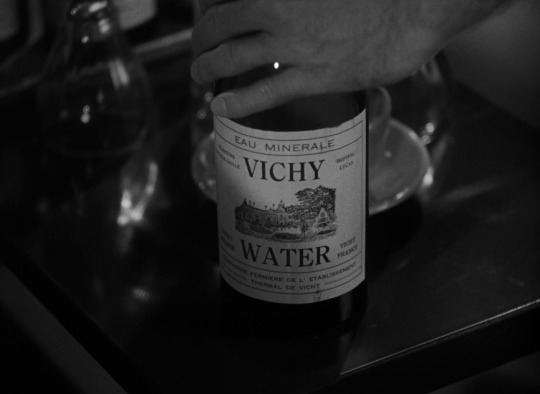
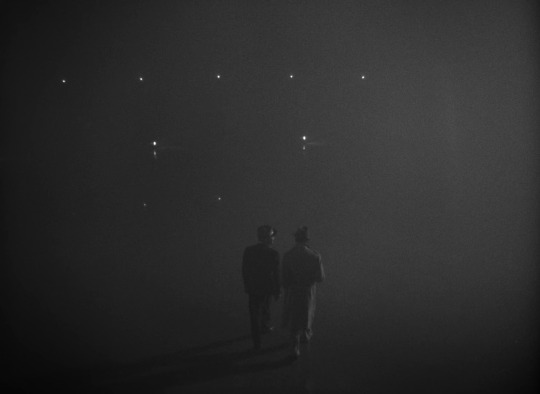

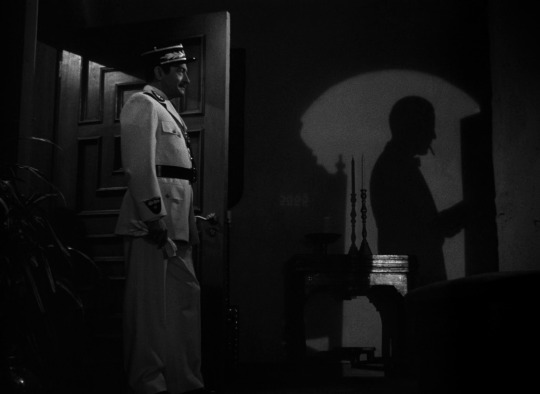


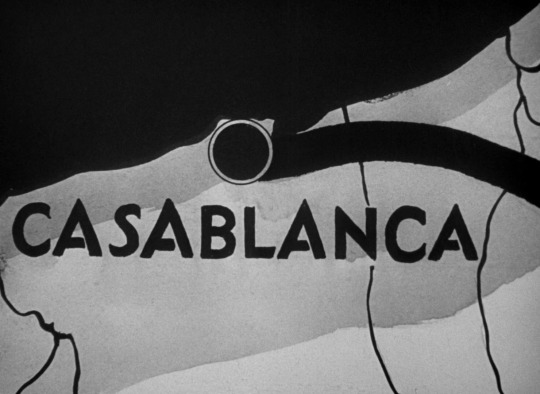
"Play it!"
Casablanca, 1942.
Dir. Michael Curtiz | Writ. Julius J. Epstein, Philip G. Epstein & Howard Koch | DOP Arthur Edeson
143 notes
·
View notes
Text
Review: Michael Curtiz’s Casablanca Gets 80th Anniversary 4K UHD Blu-ray Edition
It may be without any new extras, but Warner’s 4K UHD release of Casablanca features a strong enough A/V presentation to make the set worthy of your double dip.
by Jeremiah Kipp & Derek Smith November 10, 2022
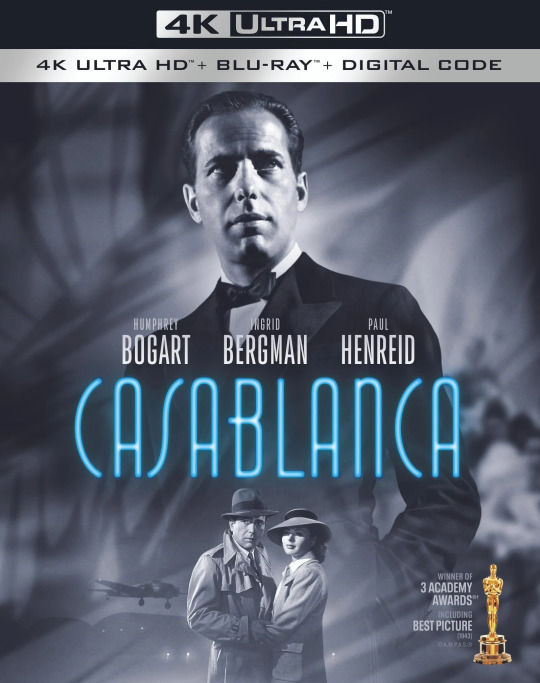
By the time we arrive at Rick’s Café Américain, a certain paranoia and vivacity has been set—and then comes romance, in the form of piano player Sam (Dooley Wilson) and his rendition of “It Had to Be You” as the camera makes a slow dolly toward him through the bustling crowd and wafts of cigarette smoke. It’s easy to fall into the rhythms of Casablanca, long before the appearance of the star-crossed lovers and their damaged idealism, or most of the great character actors who populate the world of Michael Curtiz’s film make their presence felt—such as Sydney Greenstreet’s bemusedly sinister Signor Ferrari and Peter Lorre’s nervously sweaty Ugarte.
The film has a peculiar magic to it, and because of its pace the richness of its sense of detail often goes unnoticed. Audiences make generalizations about Casablanca because of how all those little particulars add up. Film lovers discuss it with a starry look in their eyes, as if they were describing their first kiss or a lost love, because something in the film touches them, perhaps its theme of dignity and decency, of rediscovered idealism. Men seem almost instinctively drawn to Humphrey Bogart’s Rick because he’s a man of integrity, while women seem to dig him because he’s a man of mystery.
There’s also something else to Rick, and it’s visible in his hangdog face. When we first see him he’s playing chess by himself, and the light picks up on a small glimmer of spittle on his lips. Bogart was always a sputtering actor, which made him so great as a B-movie villain cowering for his life before getting shot to death by the hero. But his sudden stardom revealed something incredibly human, and as such relatable, about him. He seemed more like a real man than, say, the frequently idealized characters played by Errol Flynn. The fact that Bogart was a movie star says a lot about his particular charisma—the kind that’s earned by an actor who’s paid his dues and figured out who he is. Rick is his own man, and like those refugees at the start of the film who watch a plane fly above Casablanca, his life experience is written on his face.
Rick is first seen with his back turned to a local who’s had too much to drink. “Rick, where were you last night?” the man says, to which Rick replies, “That was so long ago, I don’t remember.” Even though there’s no overt sex in Casablanca, it’s constantly implied. When Rick orders his bartender to take a girl home in a cab, he asks him to come right back. In the scenes between Rick and Captain Renaud (Claude Rains), the men talk about women as if they were baubles to be admired, then dropped. Renaud also fawns over his friend with the most extravagant, slightly ironic hero-worship, and in a classic line from the film, Rains’s classy, debonair captain tells Ingrid Bergman’s Ilsa Lund that if he were a woman, he’d also be in love with Rick.
It’s astonishing when Bergman materializes some 30 minutes into the film, after Ugarte has whimpered for his life and been shot dead, and Rick has proclaimed that he “sticks his neck out for no one” and came to Casablanca “for the waters.” The shot that first captures the glamorous Bergman doesn’t call attention to itself, or highlight her in the frame, and yet we can’t take our eyes off her. It’s strange, because the shot is very wide, the dress she wears is plain, and she looks nervous and hesitant. How can a woman be so luminous when she’s moving her face back and forth like a deer transfixed by car headlights? When the audience finally sees Ila in close-up, sitting at a table in Rick’s Café with her husband, Victor Laszlo (Paul Henreid), her face is somewhat round, her eyes are sharp, and her voice has a certain breathless quality. Bergman, like Bogart, captivates us because of that ineffable thing we call presence. In this moment, the audience instantly understands Rick and Ilsa through the actors’ faces.
If audiences are to admire Rick and Bogart, then we’re meant to adore Ilsa and Bergman. Victor is set up as a great freedom fighter, yet he feels more like an abstract idea or plot point, not unlike the letters of transit that allow people safe passage out of Casablanca. Ilsa, like Rick, is a full person, with vulnerability in her eyes and a magnetism to her presence that goes beyond gauzy lenses and classical three-point lighting. Naturally they’re drawn to one another. She has a lot of big moments in the film, but a lot of small ones too that are just as memorable, such as that tiny, mischievous gleam in her eyes when she asks Sam to play some of the old songs.
There are, of course, the close-ups of Rick and Ilsa when they see each other for the first time as Sam plays “As Time Goes By,” but there’s also the furtive glances that they throw at one another before their eyes flicker back to the table, as they sit chatting about precedents being broken with Victor and Renaud. Casablanca is about striving for something meaningful. But it’s also a tale of sacrifice in the name of greater good, set in a world of shadows, booze, cigarette smoke, and memories. The love story at its center of allows heroes to tap into something special within themselves, and if they lost it in Paris, somehow they got it back in Casablanca. The film is all of those things at once, but it’s also about these people, these faces, and all the little moments between them. It reminds us that when we’re in relationships, we learn more about who we are reflected in others, and when we go to the movies, the great ones can do the same thing.
Image/Sound
Warner Bros. has always rolled out the red carpet for Casablanca before on home video, so it’s no surprise that this 4K UHD release is top-notch. The image quality on their 2012 Blu-ray was already fantastic, but this new transfer gives a noticeable boost in contrast, particularly in the moodier interior scenes in Rick’s Café Américain, where the blacks are now deeper and the varying shades of gray are more clearly defined. There’s also tighter grain levels, which means that there’s new depth and dimensionality to the image. The audio is also flawless, with a well-balanced and robust mix that greatly benefits Max Steiner’s legendary score.
Extras
The extras on this two-disc special edition, all ported over from Warner’s 2012 release, are included on a separate Blu-ray disc in order to maximize the bit rate of the film on the 4K disc. Most noteworthy are the two nicely complementary audio commentaries, one by film critic Roger Ebert and the other by film historian Rudy Behlmer. Ebert and Behlmer each discuss Casablanca’s historical context, behind-the-scenes drama, and the actors’ backgrounds, as well as provide expert critical analysis, and without undue redundancy.
Also included are a pair of feature-length documentaries on Michael Curtiz and Humphrey Bogart that provide in-depth overviews of their respective careers and struggles with the studio system. In another, shorter documentary, Casablanca’s rocky production is the focus. Also stressed is the fact that this was just one of 50 films that Warner Bros. released in 1942, and that no one at the studio or any of its stars expected it to be so acclaimed.
The remaining extras are more bite-sized, including a brief intro to the film by Lauren Bacall, a slick puff piece called “A Tribute to Casablanca,” deleted scenes, outtakes, and an interview with Bacall and Bogart’s son Stephen Bogart and Ingrid Bergman’s daughter Pia Lindstrom, who discuss the enduring legacy of the film. Lastly, there are audio-only features of the scoring stage sessions and a 1947 Vox Pop radio broadcast and a handful of Looney Tunes shorts.
Overall
It may be without any new extras, but Warner’s 4K UHD release of Casablanca features a strong enough A/V presentation to make the set worthy of your double dip.
Score:
Cast: Humphrey Bogart, Ingrid Bergman, Paul Henreid, Claude Rains, Conrad Veidt, Sydney Greenstreet, Peter Lorre, Dooley Wilson Director: Michael Curtiz Screenwriter: Julius J. Epstein, Philip G. Epstein, Howard Koch Distributor: Warner Bros. Home Entertainment Running Time: 102 min Rating: NR Year: 1942 Release Date: November 8, 2022 Buy: Video
#Casablanca#Slant Magazine#Jeremiah Kipp#Derek Smith#Humphrey Bogart#Ingrid Bergman#Paul Henreid#Claude Rains#Conrad Veidt#Sydney Greenstreet#Peter Lorre#Dooley Wilson#Michael Curtiz#Philip G. Epstein#Howard Koch#Warner Bros. Home Entertainment#4K UHD#Julius J. Epstein
2 notes
·
View notes